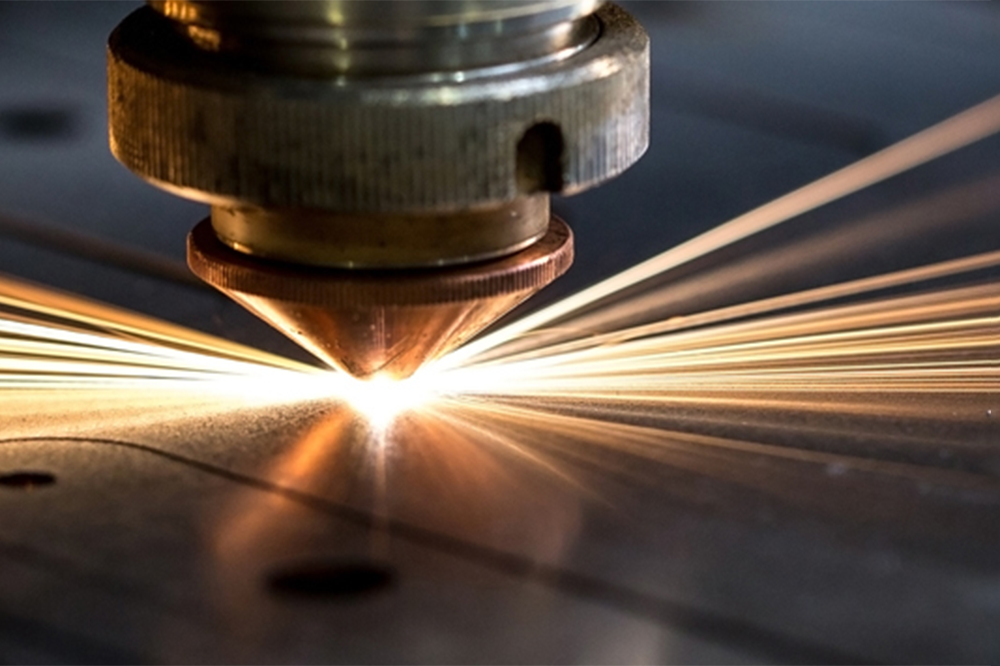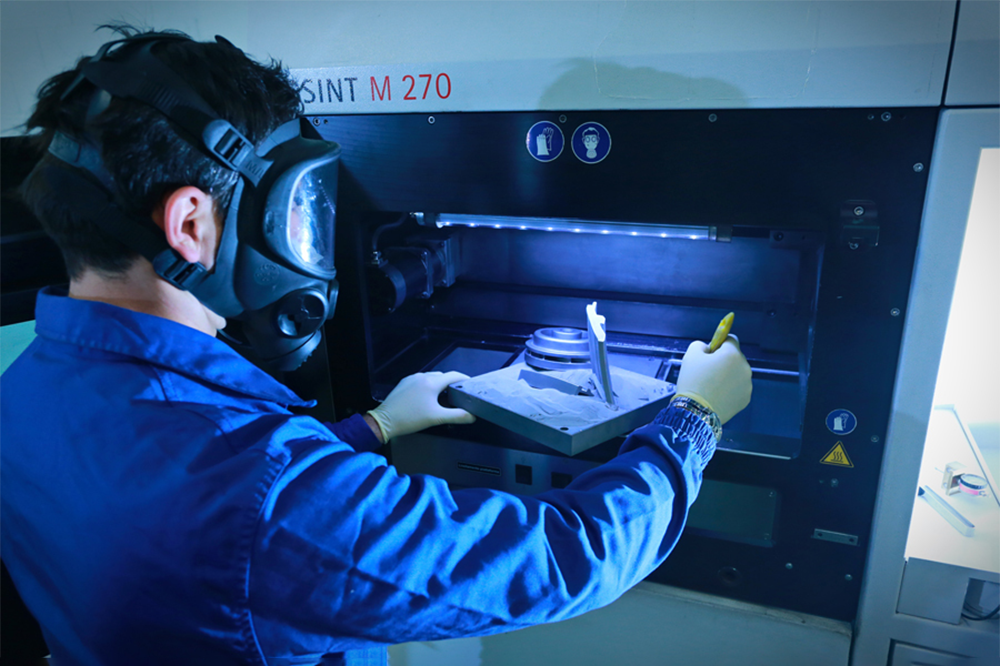The University of Oklahoma has received an $8.7 million congressional appropriation awarded through the Air Force Research Laboratory in partnership with the Air Force Sustainment Center, Oklahoma City Air Logistics Complex (OC-ALC) and GE-Additive for a comprehensive metal additive manufacturing research project to test the design and fabrication of replacement parts that could meet the certification requirements for airworthiness qualification by the U.S. Air Force.
“Additive manufacturing, also known as 3-D printing, is layer by layer printing to produce 3-D objects,” said Zahed Siddique, the principal investigator for the project and the associate dean for research at the Gallogly College of Engineering.
Metal additive manufacturing uses metal powders and advanced processing technologies integrating powder bed fusion and direct laser melting, allowing for the direct manufacturing of replacement parts, meaning quicker, cheaper and – as this project aims to show – more reliable and sustainable manufacturing.
Some aircraft can remain in service for 60 or 70 years. Extending the life an aircraft is economical and in the case of our warfighters – essential. “The number of parts needing to be replaced on these older systems at any given time are very low,” said Siddique. “They are legacy components, so finding someone to manufacture replacement parts can be difficult. Additive manufacturing allows a way to find quick and valuable solutions.”
However, to ensure the safety and superiority of equipment used by the Air Force, parts fabricated through this process require official certification for airworthiness.
“Certification for airworthiness has several components,” said Lt Gen (ret.) Gene Kirkland, executive director of the Oklahoma Aerospace and Defense Innovation Institute at OU. “It involves providing very detailed information about the process, the equipment used, and the quality of the components to show this is both repeatable and an improvement from previous sources or methods.”
This project adds University of Oklahoma’s expertise and capabilities to strengthen current metal additive manufacturing efforts underway through the Pacer Edge Program involving OC-ALC's Reverse Engineering and Critical Tooling (REACT) lab, the Air Force Life Cycle Management Center’s Propulsion Directorate and industry partner General Electric.
“We greatly appreciate our federal legislators authorizing and appropriating funds to advance OC-ALC’s educational partnerships,” said Maj Gen Jeff King, OC-ALC commander. “The $8.7 million targeted for our educational partnership with the University of Oklahoma will be dedicated to advancing the art of 3-D metal printing for aircraft parts, and specifically those related to propulsion systems. The goal is to keep pace with industry – sustain engines with the same processes the original equipment manufacturers use to manufacture them, and better combat the growing challenge of diminishing sources of manufacturing and supply to improve Air Force readiness and reduce sustainment costs. Partnerships with education and industry are absolutely vital to meeting the Air Force Chief of Staff’s mandate to ‘Accelerate Change.’”
Coordinated by the Oklahoma Aerospace and Defense Innovation Institute at OU, this project will integrate diverse and interdisciplinary capabilities from the Gallogly College of Engineering and the Data Institute for Societal Challenges, as well as provide hands-on and real-world experience for students to work on research and development issues of importance to the U.S. Air Force.


